|
Avebury's Many Upward Looking Statues - "Zenith-Seekers"

Those who deny the existence of artistic carvings at Avebury would say that any lithic features resembling human or animal faces were mere accidents of nature, meaningless noise in the stones, mistakenly assembled into Rorschach shapes due to the human brain's inherent need to impose patterns on whatever it sees.
Of course, if this were to be correct we would expect to "see" random faces, with no consistency of appearance as accident is very unlikely to replicate similar designs again and again. Furthermore the appearance of faces at different scales would tend to suggest these were not the result of natural crystaline effects inherent in sarsen. Lower down this page is a gallery of such faces, from the 5600 year old example at West Kennet Long Barrow, to the impressive example at the very centre of the main henge atop Cove Stone II. For convenience, I have decided to call this class of statues zenith-seekers.

|
Please click on the thumbnails below to open larger images of the faces:
1: Flat Faced Zenith-Seekers
|
| |
|
|

|

|
| |
|
|

|

|
| |
|
|
2: Rounded Face Zenith-Seeker
|
| |
|
|

|

|
| |
|
|
3: Animal Zenith-Seekers
|
| |
|
|

|
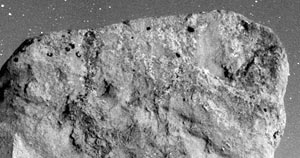
|
| |
|
|
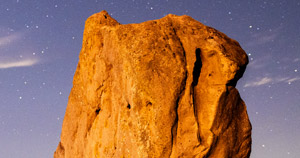
|
|
|
|
|
4: Zenith-Seeker With Convex Eyes
|
| |
|
|
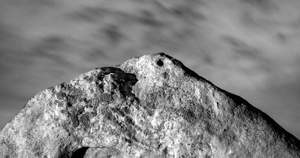
|
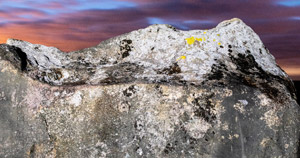
|
| |
|
| |
|
|
Of course we can also find hybrid types, for example the stunning face below shares the same pointy nose as the left hand Type 4 above, but it has socket, not convex eyes!:
|
| |
|
|

|
| |
|
|
|
| One of my absolute favourite zenith-seekers is the one on top of WKA's Stone 26b, a stylish and economical sculpture: |
| |
|

|
| |
| |
|
Such a widesread presence of zenith-seekers at Avebury strongly suggests that the sky religion practised here was not just concerned with movements of the sun or moon because these objects never reach the zenith here. These carvings show that there was additionally a profound interest in objects visible in the sky directly above the worshippers' heads, whether the prehistoric people were obsessed with shapes in the clouds overhead in the daytime, or with the zenithal stars at night, is of course unknown.
I suspect the existence of other zenith-seekers all over Avebury. For instance there may be a crude one atop the Hag Stone 35a. Below is an explanatory diagram, which shows a rotated image of the summit of the monolith:
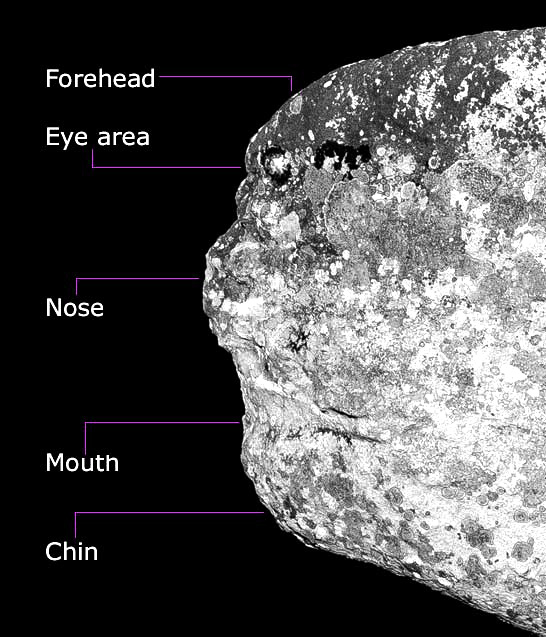
Generally see also Di Pattison's "Avebury's Stones" CD p 32.2.html
|
|